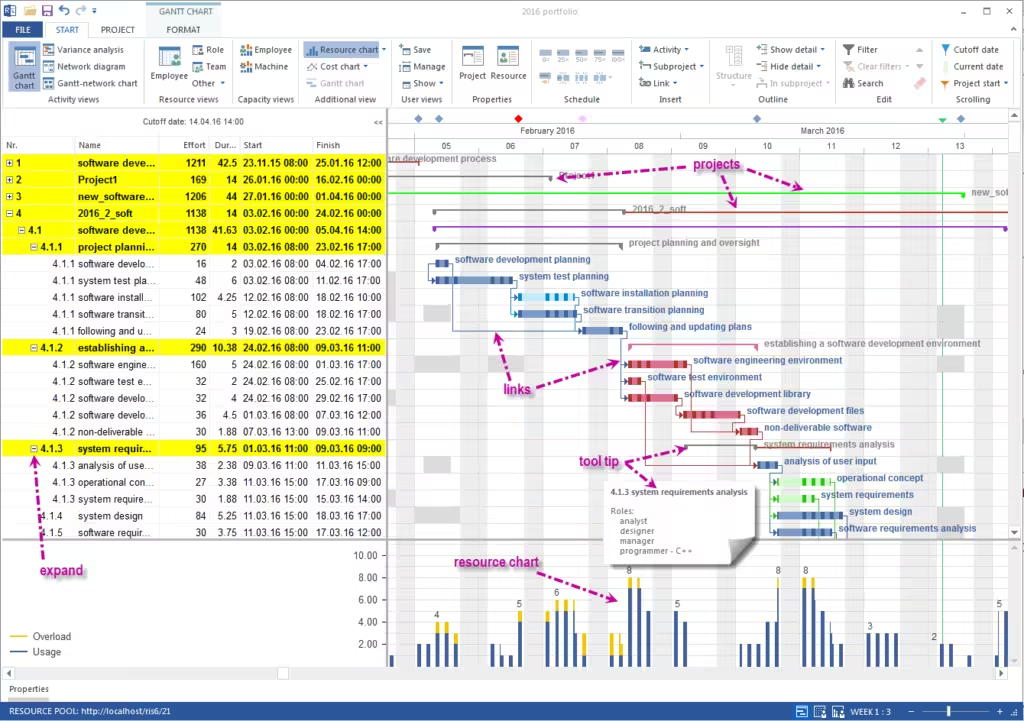Accurate cost estimation and proper project management are essential in every construction project. These two aspects are often handled by two powerful tools: the Bill of Quantities (BOQ) and the Work Breakdown Structure (WBS). When used together, they create a framework for effective cost control and project scheduling.
From my years of experience managing construction projects, I’ve seen how aligning BOQ with WBS can make or break a project. This alignment prevents cost overruns, ensures clarity in task execution, and promotes efficient use of resources. In this article, I’ll outline best practices for aligning BOQ with WBS and share insights into how these practices can be applied in real-world projects.

Figure: It is essential to align BOQ with WBS.
Understanding BOQ and WBS: A Brief Overview
Before diving into best practices, it’s essential to grasp the role of both the BOQ and WBS in construction projects.
A. Bill of Quantities (BOQ)
The BOQ is a document that itemizes the materials, labor, and services required for a project. It provides detailed quantities and costs for each component, ensuring accurate cost estimation. A well-prepared BOQ breaks down the project into measurable units, offering clarity in budgeting and cost control.
B. Work Breakdown Structure (WBS)
The WBS is a project management tool that divides the overall project into smaller, manageable tasks. Each task in the WBS represents a specific deliverable or piece of work, with assigned responsibilities, timelines, and costs.
Both BOQ and WBS serve as cornerstones for project success. Aligning these two ensures that what is being estimated in terms of costs (BOQ) directly corresponds with the tasks identified for execution (WBS).
The Importance of Aligning BOQ with WBS
In my experience, projects that fail to align their BOQ with their WBS often face communication gaps, cost overruns, and delays. When these two tools are misaligned, project teams struggle to reconcile the scope of work with actual costs.
Aligning the BOQ with the WBS provides the following benefits:
A. Clear Project Scope
When the BOQ aligns with the WBS, it creates a transparent relationship between the tasks and their costs. This ensures that all work packages in the WBS have corresponding items in the BOQ.
B. Accurate Cost Control
Alignment minimizes discrepancies between the actual work done and the cost estimates. With this synchronization, project managers can track whether the costs incurred are in line with the budget.
C. Enhanced Communication
A well-aligned BOQ and WBS ensure everyone—from project managers to contractors—are on the same page. It reduces the risk of misunderstanding task priorities and resource allocation.
Best Practices for Aligning BOQ with WBS
Aligning BOQ and WBS may sound straightforward, but it requires careful planning and coordination. Based on my years in construction management, here are the best practices I recommend:
A. Start with a Detailed Scope Definition
The foundation of any successful project is a clear and well-defined scope. The project scope should outline all deliverables, milestones, and key tasks. Without a detailed scope, it’s impossible to create an effective WBS or an accurate BOQ.
B. Ensure Consistency in Terminology
One common issue I’ve faced is inconsistency in terminology between the BOQ and WBS. A task described in the WBS might not have the same name or description in the BOQ, leading to confusion.
To avoid this, use consistent language across both documents. For instance, if the WBS includes “foundation excavation,” the BOQ should use the same term, rather than an alternative like “site digging.” This consistency ensures that everyone understands which tasks are being referenced and what costs are associated.
C. Link BOQ Items Directly to WBS Tasks
Each item in the BOQ should correspond to a task or work package in the WBS. This is one of the most important steps in aligning the two. For example, if the BOQ includes the cost for 500 cubic meters of concrete, the WBS should have a task related to concrete pouring, with clear quantities linked to the BOQ.
By linking the two, you ensure that costs are based on actual tasks, eliminating any ambiguity about where the money is being spent.
D. Use Software to Facilitate Alignment
Many project management software tools allow you to integrate your BOQ and WBS. Tools like Primavera P6, Microsoft Project, or Procore make it easier to align tasks with costs and track the relationship between the two.
In one project I worked on, using Primavera P6 helped me quickly spot discrepancies between our BOQ and WBS. The software provided a visual representation of where certain costs exceeded our estimates, allowing us to take corrective actions early on.
E. Regularly Update Both Documents
Construction projects are dynamic, and changes are inevitable. When changes occur—whether due to design revisions or unforeseen challenges—it’s essential to update both the BOQ and WBS.
I’ve seen teams neglect this step, resulting in significant gaps between their cost estimates and actual work. For example, in one project, changes in the foundation design were reflected in the WBS but not in the BOQ. This led to confusion when the actual costs exceeded the budgeted amounts. By keeping both documents up-to-date, you ensure that your project remains aligned and within budget.
F. Conduct Regular Audits
Throughout the project lifecycle, regularly audit the alignment of the BOQ and WBS. Audits ensure that the two remain in sync and help identify any areas where adjustments are needed.
For instance, conducting a mid-project audit helped me uncover inconsistencies in material quantities during a commercial building project. We corrected the BOQ to reflect the actual quantities used, ensuring that future work stayed on track.
G. Involve Key Stakeholders
It’s important to involve key stakeholders, including quantity surveyors, project managers, and contractors, when aligning the BOQ and WBS. Their input ensures that both documents accurately reflect the project’s needs.
In one project, I made the mistake of excluding the site engineer from early BOQ discussions. As a result, the quantities in the BOQ didn’t account for certain site conditions, leading to underestimation. Involving key stakeholders from the outset helps prevent such issues.
Common Challenges in Aligning BOQ with WBS
While aligning the BOQ with the WBS offers numerous benefits, it’s not without challenges. Some common obstacles include:
A. Scope Creep
As projects evolve, additional work often creeps in, leading to misalignment between the BOQ and WBS. When scope creep occurs, costs rise, and it becomes difficult to reconcile the two documents.
To combat this, it’s essential to document all scope changes and update both the BOQ and WBS accordingly. Keeping a close eye on scope changes helps prevent misalignment.
B. Lack of Communication
Poor communication between teams often results in BOQ and WBS misalignment. Without clear lines of communication, changes in one document may not be reflected in the other.
To address this issue, establish regular meetings between the project management team, quantity surveyors, and site engineers. Open communication channels prevent gaps in project documentation.
C. Misinterpretation of Quantities
Sometimes, the quantities listed in the BOQ may not match the tasks outlined in the WBS. This occurs when there’s a misunderstanding of what work is required or when estimation errors are made.
In one project I worked on, the BOQ listed the wrong quantities for steel reinforcement. Because the WBS wasn’t aligned, we didn’t catch the mistake until after materials were ordered, leading to delays and cost overruns. Double-checking quantities in both documents can prevent this issue.
Real-World Example: Aligning BOQ with WBS
To illustrate the importance of aligning BOQ with WBS, I’ll share a real-world example from my own experience. In a large infrastructure project, the initial BOQ and WBS were created separately, with little coordination between the teams.
This led to several problems, including confusion about task responsibilities, misallocation of resources, and cost overruns. After reviewing the project, we decided to realign the BOQ and WBS by linking specific costs to tasks and work packages.
The realignment made a huge difference. Task execution became clearer, we avoided further delays, and the project was eventually delivered within budget. This experience reinforced the importance of integrating the BOQ and WBS from the very beginning of a project.
The Role of Technology in BOQ and WBS Alignment
In today’s construction industry, technology plays a vital role in streamlining project management. Software tools that allow for the integration of BOQ and WBS have become indispensable for project managers.
Tools like Procore and Aconex enable seamless alignment by linking tasks to costs, tracking changes, and offering real-time updates. In my experience, these tools have reduced the risk of misalignment and made it easier to manage large-scale projects.
By using technology to facilitate BOQ and WBS alignment, you can improve the accuracy of your cost estimates, ensure better control over project progress, and minimize the risk of budget overruns.
Conclusion: Aligning BOQ and WBS for Project Success
Aligning the BOQ and WBS is critical for ensuring project success in construction. From my experience, projects that prioritize this alignment are better able to control costs, track progress, and avoid misunderstandings between teams.
The best practices outlined in this article—such as using consistent terminology, linking BOQ items to WBS tasks, and involving key stakeholders—will help you ensure that your BOQ and WBS remain aligned throughout the project lifecycle.
By following these best practices, you’ll be able to deliver projects on time, within budget, and with greater efficiency.
References
- PMI. “A Guide to the Project Management Body of Knowledge (PMBOK® Guide).”
- Kerzner, H. “Project Management: A Systems Approach to Planning, Scheduling, and Controlling.”
- Primavera P6 and Microsoft Project Documentation.
- Procore and Aconex User Guides.
- Personal Experience in Construction Project Management.








Leave a Reply